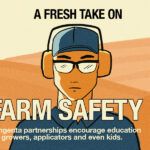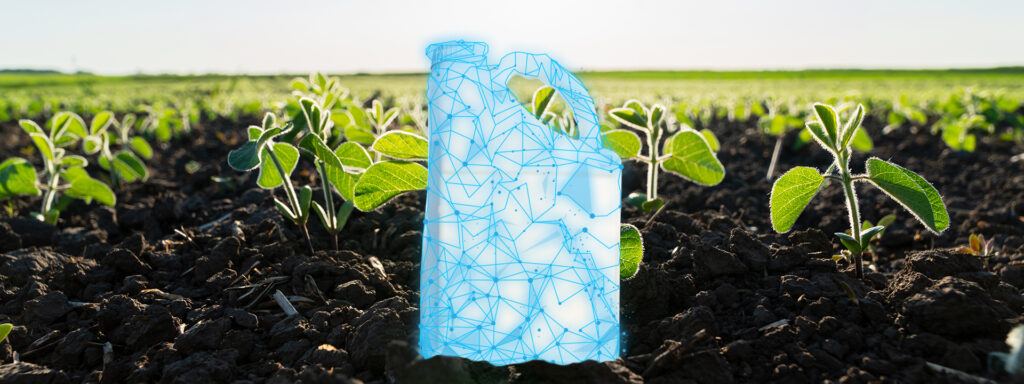Safe Farms Aren’t Created by Accident
Two medical experts provide timely tips that can help keep growers and workers healthy and safe this season.

Q: What are some of the most typical health challenges or injuries on a farm in the spring?
A: David Merrell, M.D., occupational health physician, Syngenta: According to the Centers for Disease Control and Prevention, the National Ag Safety Database, and the Association of American Medical Colleges, agriculture workers in combination with workers in forestry and fishing have the highest fatal injury rate at 23.4 deaths per 100,000 compared with 3.5 deaths per 100,000 for all other U.S. industries*. The most common injuries on a farm stem from machinery maintenance activities, with the most fatal injuries involving tractors overturning or running over the individual.
Regardless of the type of injury or illness, one of the greatest health challenges confronting American farmers today is having access to available, affordable and convenient health care. This challenge results from distance to a health care provider’s office, lack of accepted medical coverage, as well as lost time and wages incurred from traveling for care. Studies show a steady decline in the number of medical offices serving rural communities. This trend leads to fewer office visits and a decline in overall health outcomes. Generally, rural communities carry higher rates of death from heart disease, cancer, unintentional injury, chronic lower respiratory disease and stroke.
A: Knesha Rose-Davison, public health program director, AgriSafe Network: In the spring, some of the most typical health challenges on a farm are injuries and illnesses that stem from working with livestock and calving. These include infectious diseases transmitted from animals to humans as well as injuries that result from needle sticks and working with large animals.
Spring is also the time that growers are emptying grain bins, so maintaining respiratory health and avoiding grain bin accidents that could lead to suffocation are top priorities. Additionally, warmer weather can bring more stress to farmers as they start planting their crops, so maintaining good mental health is important.
Regardless of the type of injury or illness, one of the greatest health challenges confronting American farmers today is having access to available, affordable and convenient health care.
Q: What can growers do to safeguard themselves and others against these conditions?
A: Merrell: Education and perspective are key. Knowing how to safely operate and maintain a piece of equipment is critical to one’s safety. Growers can accomplish this goal by making sure they regularly review operating and maintenance manuals and follow safety guidelines. Injuries most often occur when farm workers use machinery outside of normal operating procedures in an effort to “get a job done.” Remembering the potential cost of an injury — life, limb, lost time working — can help prevent the urge to work outside of what is considered safe and can reduce the potential for harm.
Telehealth decreases travel time, time lost from work and school, and lag times for diagnosis and treatment, which can improve outcomes and decrease stress.

A: Rose-Davison: Growers can safeguard themselves, their workers and their families by assessing the potential risks and hazards associated with upcoming tasks and work sites prior to busier times. For example, farm owners can schedule safety talks with their workers about protocols to follow to avoid injury. A part of this is making sure all workers have ready access to the personal protective equipment they may need, such as respirators approved by the National Institute for Occupational Safety and Health, eye protection, Tyvek® suits or coveralls, and gloves — all sized correctly and stored properly. To reduce stress, it’s important for growers to get enough sleep, have a healthy diet and stay safely connected to their social networks. They can expand their safety and health knowledge by visiting agrisafe.org and participating in one of our free training webinars.
Q: What role can mobile or telehealth medicine play in meeting the medical needs of today’s farm family?

A: Merrell: Routine medical examination can prevent many of the leading causes of death and disability — heart disease, cancer, unintentional injury, chronic lower respiratory disease and stroke — among rural communities. Mobile medical clinics can serve a broad rural community with regular exams and screening labs to help detect and prevent these ailments. Due to the high potential cost of visiting a physician at a faraway location, telehealth can provide a good option for triaging a medical issue to determine whether a more significant intervention is needed. Telehealth saves both time and money for those in rural communities. Limited access to the internet due to inadequate broadband service is an issue in many rural communities. Many farm groups and companies, including Syngenta, are advocating for increased government investment in this critical technology.
A: Rose-Davison: The COVID-19 pandemic created opportunity, decreased hesitancy and improved reimbursement for telehealth faster than we ever imagined. While not every medical visit is telehealth appropriate, when it is, there are obvious benefits for farm families. Telehealth decreases travel time, time lost from work and school, and lag times for diagnosis and treatment, which can improve outcomes and decrease stress. For behavioral health treatment and counseling, eliminating travel creates opportunities for more frequent follow-ups, which are key to assessing safety and behavioral changes. Video and audio telehealth improve access to medical specialists often not available to farm families in their communities. Some of these specialty fields include behavioral health, chronic disease management, post-surgical services, cancer treatment counseling and health education.
*Based on original data from the U.S. Bureau of Labor Statistics, 2019, and “Number and rate of fatal work injuries by industry sector, 2018,” Census of Fatal Occupational Injuries, U.S. Bureau of Labor Statistics, Washington, D.C. www.cdc.gov/niosh/oep/agctrhom.html.


















